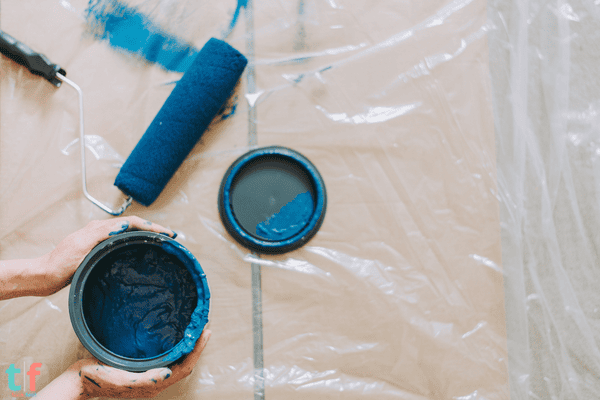Turning the Ordinary Into the Exceptional
There’s something uniquely satisfying about taking a plain, everyday object and turning it into something beautiful with just a few strokes of paint. Whether you’re upcycling thrift store finds, refreshing old decor, or creating personalized gifts, painting offers an endless array of creative possibilities.
In this guide, you’ll learn painting techniques for wood, ceramic, glass, and fabric that will transform your decorative items into unique pieces of art—no advanced art degree required.
Why Personalize with Paint?
Budget-Friendly Makeovers
A bit of paint can breathe new life into outdated or boring items. Instead of buying new, repaint what you already have and give it a fresh, modern look.
One-of-a-Kind Designs
No two hand-painted items are exactly the same. Whether it’s a boho pattern, a chic minimalist finish, or vibrant florals, your piece will carry your signature.
Therapeutic Creativity
Painting is not just artistic—it’s relaxing. It’s a creative outlet that lets you disconnect, focus, and express yourself.
Tools and Materials to Keep on Hand
- Acrylic paint (great for most surfaces)
- Chalk paint (ideal for furniture and rustic finishes)
- Fabric paint (for cushions, totes, and more)
- Glass paint (transparent or opaque options)
- Enamel paint (for ceramics or metal)
- Paintbrushes (variety of sizes and textures)
- Foam rollers or sponges
- Painter’s tape
- Stencils and masking tape
- Sandpaper (for prep and distressing)
- Clear sealant or varnish (to protect the final result)
Technique 1: Dry Brushing (For Rustic and Vintage Effects)
Works best on: Wood, terracotta, furniture
How to Do It:
- Dip the brush lightly in paint, then wipe most of it off onto a paper towel.
- Drag the nearly dry brush across the surface.
- The color will cling only to raised areas, giving a weathered, aged appearance.
🪵 Perfect for farmhouse-style trays, frames, or shelves.
Technique 2: Stenciling (For Clean, Repeatable Patterns)
Ideal for: Wood signs, walls, glass jars, fabric items
How to Do It:
- Secure your stencil with tape.
- Use a stencil brush or sponge to dab paint over the design.
- Don’t overload with paint to avoid bleeding.
- Lift stencil carefully and let dry before layering.
🖌 Use stencils to add lettering, mandalas, or geometric shapes.
Technique 3: Splatter Painting (For Abstract, Artistic Decor)
Best for: Canvas, vases, planters, or any modern accent pieces
Instructions:
- Protect your space with plastic or paper sheets.
- Dip a brush in watered-down paint.
- Flick it across the item for random patterns.
- Layer colors for more depth.
🎨 Great for creating energetic, modern art or playful kids’ room pieces.
Technique 4: Ombre Blending (For Soft, Gradient Effects)
Suitable for: Wall decor, trays, canvases, wooden letters
How to Create:
- Pick two or three shades of the same color family.
- Start with the lightest color and work downward.
- While the paint is still wet, use a clean brush to blend the lines between shades.
- Repeat until the transition is smooth.
🌅 Use this technique to add elegance to name plaques or nursery decor.
Technique 5: Sponge Dabbing (For Texture and Depth)
Ideal for: Planters, candle holders, jars
How to Apply:
- Dab a natural sponge into your paint.
- Lightly press it onto the surface, building layers slowly.
- Use contrasting or complementary colors for more impact.
🪴 It gives a soft, marbled or stone-like effect with very little effort.
Technique 6: Paint Pouring (For Abstract and Fluid Effects)
Best on: Canvas, trays, ceramic dishes
Steps:
- Mix acrylic paint with pouring medium.
- Layer colors in a cup and pour onto surface.
- Tilt the item gently to let the paint flow and spread.
- Let dry for 24–48 hours.
- Finish with a glossy varnish.
💫 Hypnotic to watch and even more beautiful as decor.
Technique 7: Hand Lettering and Freehand Details
Perfect for: Gift boxes, signs, decorative plates
Tips:
- Use fine-tip brushes or paint pens.
- Sketch outlines with pencil before painting.
- Mix thick acrylic paint for crisp lines.
- Practice on paper or scrap material first.
✍️ Adds a personal, heartfelt touch to gifts and decor.
Surfaces You Can Transform with Paint
- Glass: Paint vases, bottles, or mason jars for elegant centerpieces.
- Wood: Refinish trays, signs, or even drawer handles.
- Fabric: Customize throw pillows, tote bags, or napkins.
- Metal: Add life to tin containers, old lanterns, or photo frames.
- Ceramic: Refresh planters, plates, or figurines with enamel or ceramic-safe paint.
Safety and Longevity Tips
- Always clean and prep surfaces before painting.
- Let each layer dry completely before applying the next.
- Use sealant for items exposed to water, sunlight, or handling.
- Wear gloves and paint in well-ventilated areas when using strong paints.
Just a Few Strokes Away…
You don’t need to be a professional to paint like one. With a few tools, the right technique, and your imagination, you can transform just about anything into a decorative masterpiece.
Take an hour, grab your brush, and start with something small. You’ll be amazed at how fast confidence and creativity grow with each new piece.
👉 If this guide sparked your creativity, share it with others who love to add a personal touch to their home. The world is full of blank canvases—you just have to see them.
